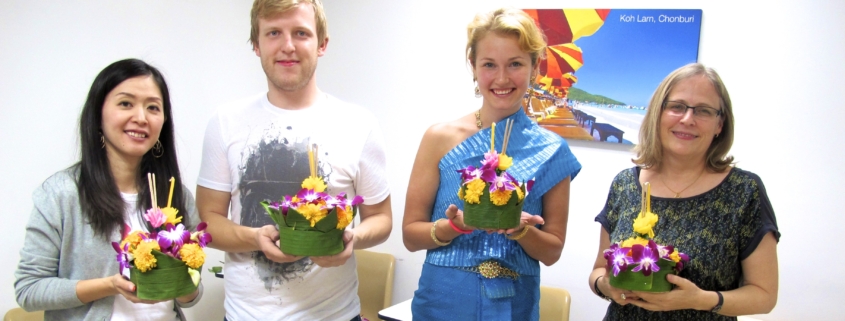Loy Krathong – Embracing Tradition and Crafting Krathongs with Duke Language School
Loy Krathong, also known as the festival of lights, is one of Thailand’s most enchanting and culturally rich celebrations. This ancient festival, which typically takes place in November, holds a special place in the hearts of the Thai people. It’s a time to express gratitude, pay homage to the water goddess, and symbolically release worries and troubles into flowing rivers and waterways. At the heart of this festival lies the art of crafting krathongs, intricately decorated floats that carry offerings and wishes. In this article, we will delve into the significance of Loy Krathong and take you through the steps of making your own krathong, while also exploring the unique opportunity to learn Thai at Duke Language School.
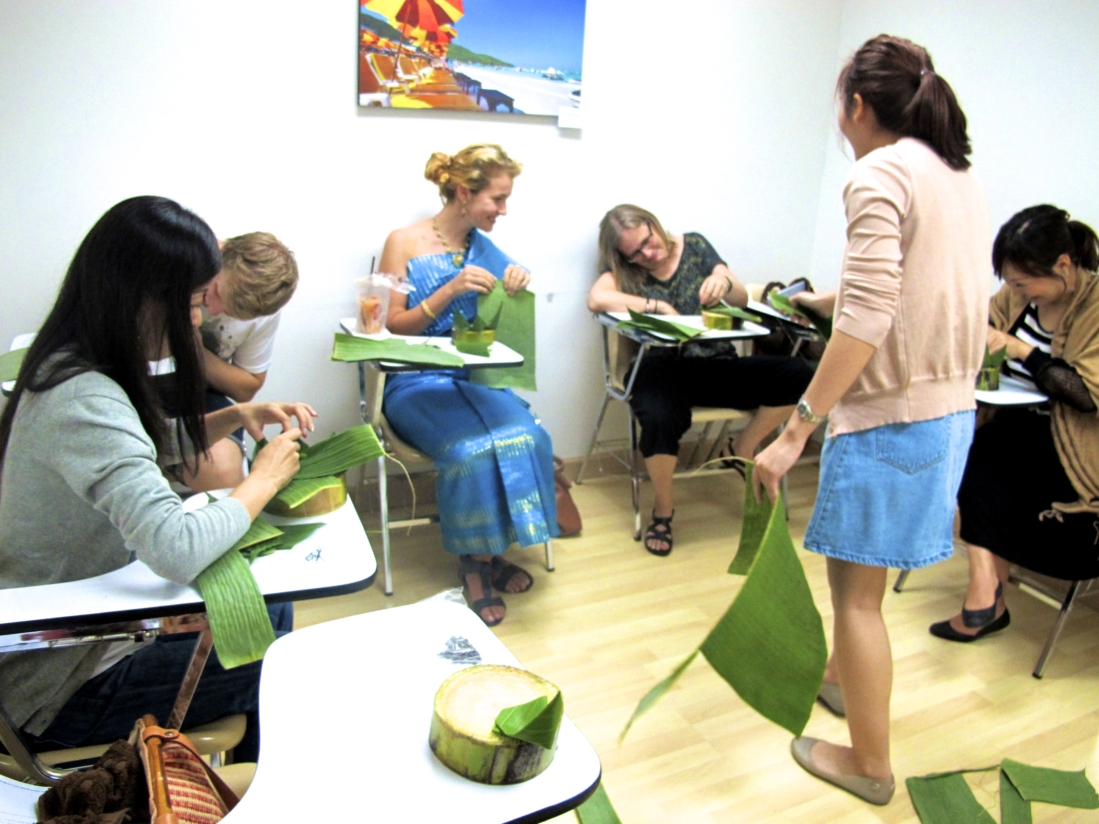
The Significance of Loy Krathong
Deep historical and cultural roots: Loy Krathong’s origins can be traced back to the Sukhothai Kingdom in the 13th century, when the festival was first celebrated as a way to express gratitude to the water goddess, Phra Mae Khongkha. Over the centuries, it has evolved, incorporating elements from Buddhist and Hindu traditions.
Celebrating nature: Loy Krathong is a festival that celebrates the importance of water in Thai culture. Thailand, often referred to as the “land of a thousand smiles,” might also be called the “land of a thousand waters” due to its numerous rivers, canals, and lakes. Water plays a crucial role in Thai agriculture and daily life, and Loy Krathong is a way to honor this life-giving element.
Releasing troubles and negativity: Central to the festival is the practice of releasing negative emotions, troubles, and bad luck into the water. As people set their krathongs afloat, they do so with the belief that their worries will be carried away by the currents, allowing them to start anew with a clean slate.
Making wishes: As krathongs gently float away, people often make wishes for the future. These wishes can be personal hopes and dreams or broader aspirations for the well-being of their communities and the world at large. Making a wish while releasing a krathong is a symbolic gesture of hope and optimism.
Expressing gratitude: Loy Krathong is a time to express gratitude to ancestors, teachers, and loved ones. Many people include small tokens or mementos on their krathongs as a way of honoring those who have passed away or played significant roles in their lives.
Crafting Your Own Krathong – 5 Easy Steps
Now that we’ve explored the significance of Loy Krathong, let’s delve into the art of crafting your very own krathong. Creating a krathong is a creative and fulfilling experience, allowing you to immerse yourself in the festival’s traditions.
Step 1 – Gather your materials
To create a beautiful krathong, you’ll need the following materials:
- A circular base: Traditionally made from banana tree trunks. If banana trees are not available, styrofoam or bread may be used as a substitute for the base of the krathong.
- Fresh banana leaves: These will form the decorative part of the krathong.
- Flowers, incense sticks, and candles: These items will adorn your krathong and make it visually appealing.
- A small coin or money offering: Placing a coin on your krathong symbolizes an offering to the Water Goddess.
- String or pins: You’ll need these to secure the banana leaves and other decorations in place.
- Scissors and a small knife: These tools will be used to cut and shape the materials.
Step 2 – Prepare the base
If you’re using styrofoam or a banana tree trunk as your base, begin by cutting it into a circular shape. Ensure that it’s sturdy enough to hold your decorations and float on the water. The size of your krathong can vary, but it typically measures around 20-30 centimeters in diameter.
Step 3 – Create the decorative layers
Banana leaf base – Cut the banana leaves into small, square pieces. Dip them in water to make them more pliable to prevent them from cracking. Arrange these pieces on the base to form a circular layer, securing them with pins or string.
Decorate with flowers – Place colorful flowers on top of the banana leaf base. Popular choices include chrysanthemums, marigolds, and lotus petals. Use pins to secure the flowers in place.
Step 4 – Add incense and a candle
Insert three incense sticks evenly around the center of the krathong. These sticks symbolize the elements of earth, water, and fire. Place a candle in the middle, making sure it’s secure. You may need a small piece of banana leaf or wax to hold the candle in place.
Step 5 – Final touches
Attach a small coin – It is customary to attach a small coin or money offering to your krathong as a symbol of gratitude and respect for the water goddess. Use string or pins to secure it to the krathong.
Trim and shape – Use scissors and a small knife to trim any excess banana leaves and shape your krathong. Ensure that it’s well-balanced and can float steadily on the water.
Learn Thai
While Loy Krathong offers a glimpse into the rich culture and traditions of Thailand, one can further immerse themselves in Thai culture by learning the Thai language.
Here are some pictures from Duke Language School’s Loy Krathong activity from previous years.

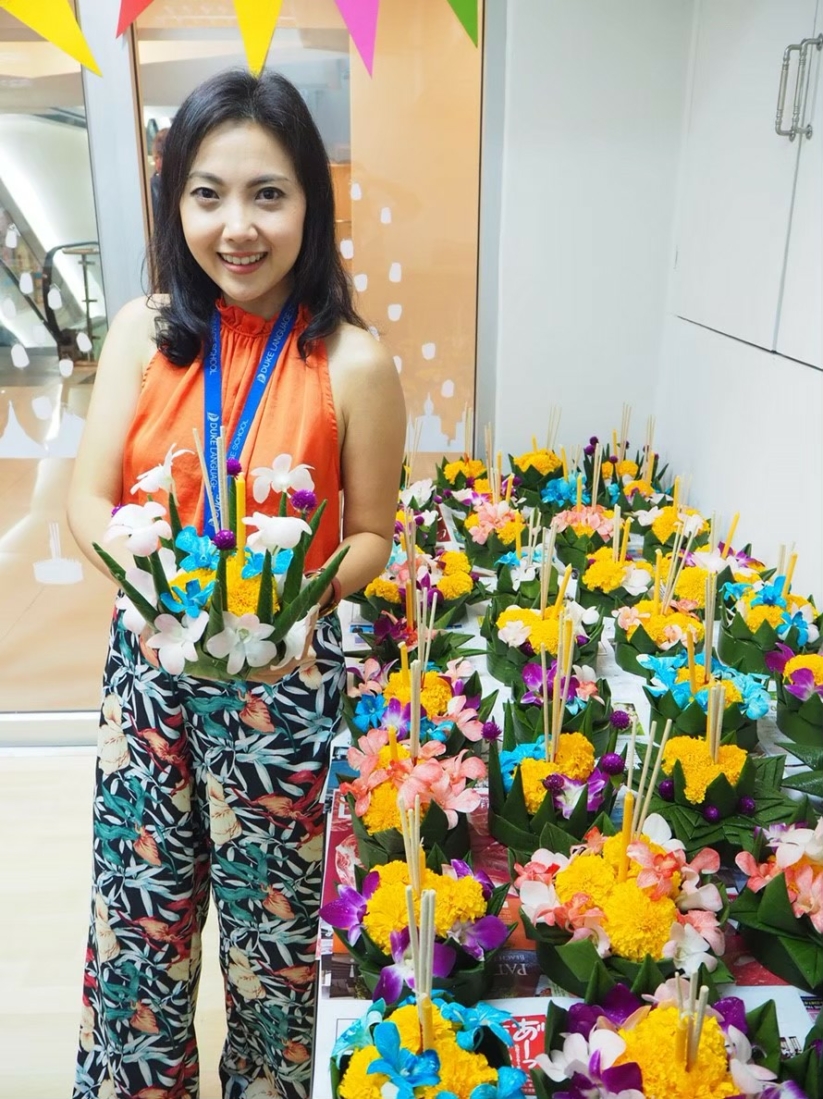
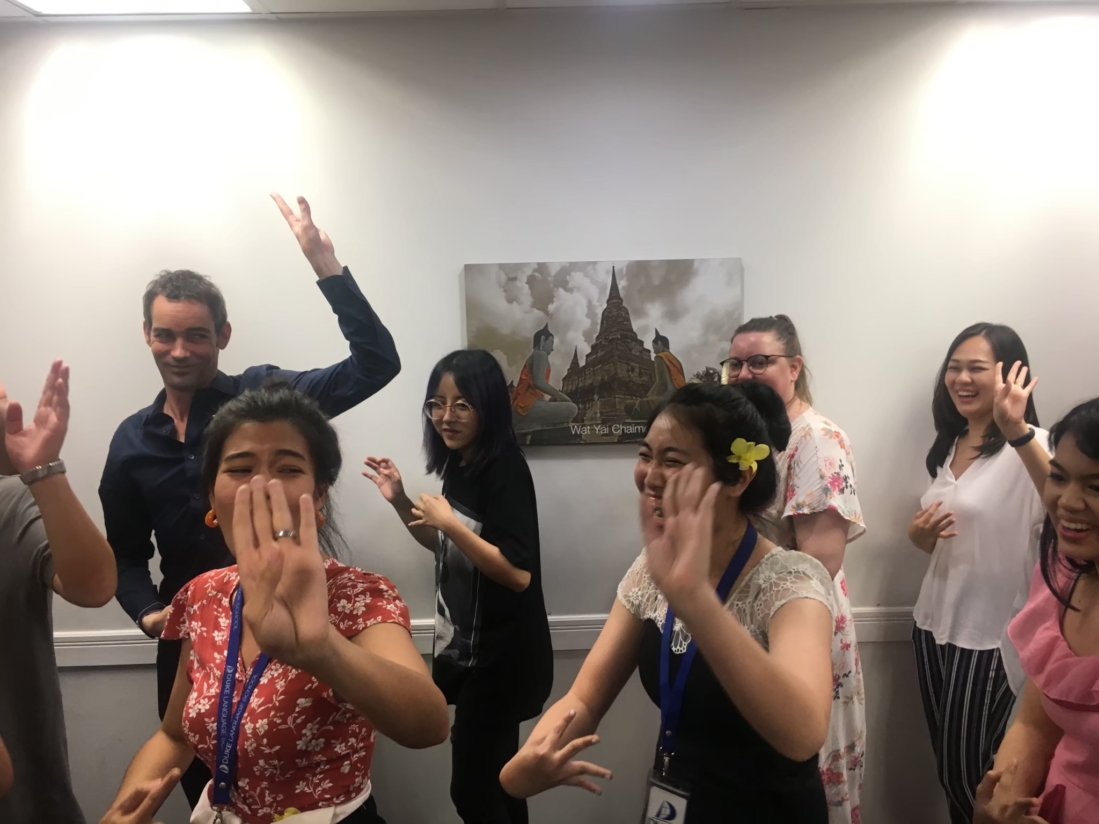
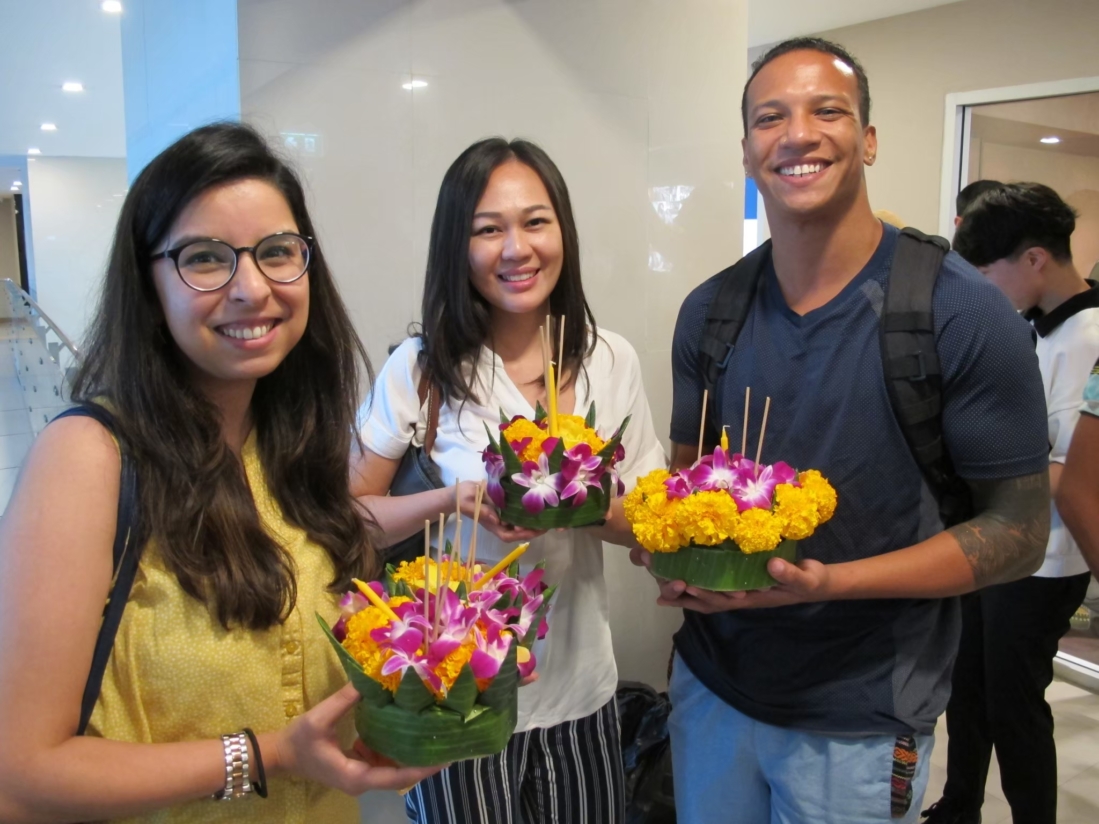
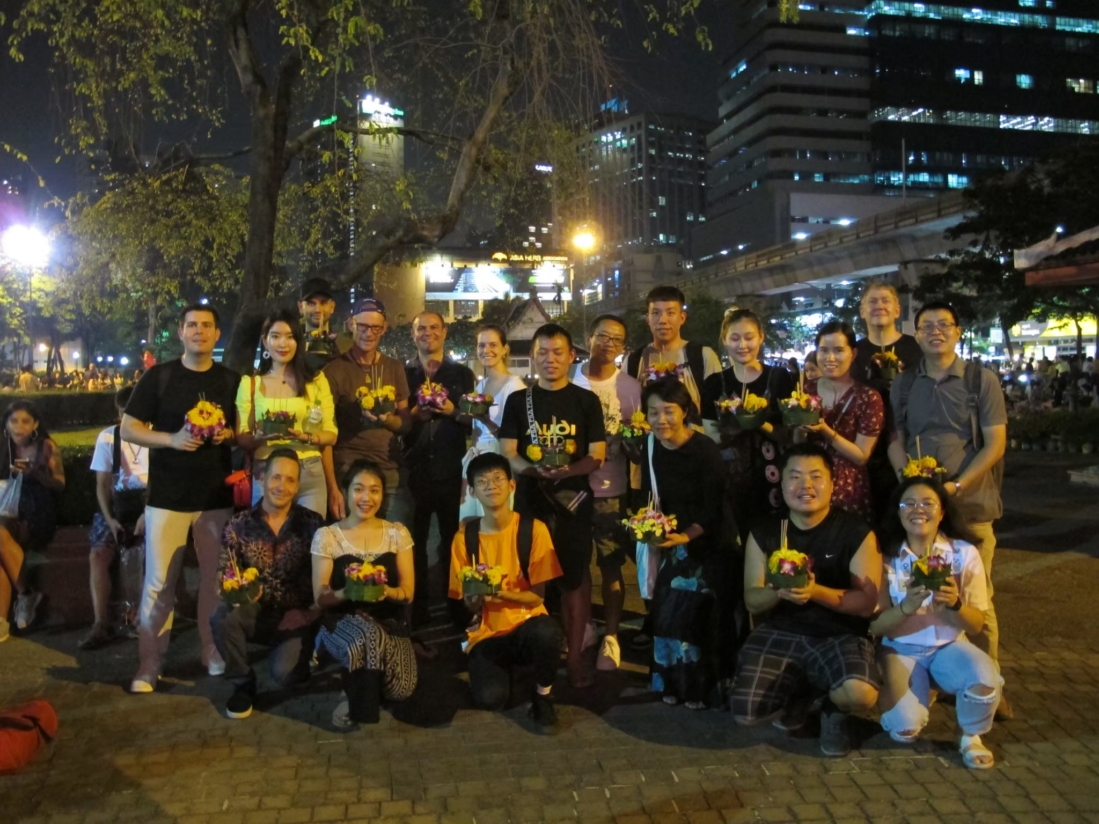
Duke Language School offers a variety of Thai language courses for learners of all levels, from beginners to advanced speakers. Our Thai language instructors provide comprehensive language instruction that covers speaking, listening, reading, and writing skills. Whether you’re a traveler looking to communicate more effectively during your visit to Thailand, or someone interested in deepening your understanding of the culture, learning Thai at Duke Language School can be a rewarding experience.
By enrolling in a Thai language course, you can enhance your appreciation of Loy Krathong and other Thai traditions. Speaking the language not only allows you to communicate with locals more effectively but also enables you to connect on a deeper level with the culture and heritage of Thailand.
Conclusion
Loy Krathong, the festival of lights, is a cherished Thai tradition that allows Thai people to connect with their cultural heritage, express gratitude, and release their worries into the water. During this holiday, people craft krathongs. Krathongs are beautiful, handmade floating objects that carry offerings and wishes. By following the five steps outlined in this article, you can create your own krathong and participate in this beautiful celebration. As you release your krathong into the water and make your wishes, take a moment to take in the atmosphere, the flickering candlelight, and the reflections on the water’s surface. Loy Krathong is not only a time for celebration but also a time for reflection, gratitude, and cultural enrichment.
When you study Thai with us at Duke Language School, you will deepen your understanding of Thailand’s culture and language, enabling you to more fully connect to Thailand and its people. As Loy Krathong approaches, remember that this festival offers not only the beauty of lights on the water but also the opportunity to explore the richness of Thai culture through language and tradition.
สุขสันต์วันลอยกระทง
Sùksǎn wan lɔɔi gratong
Happy Loy Krathong!

